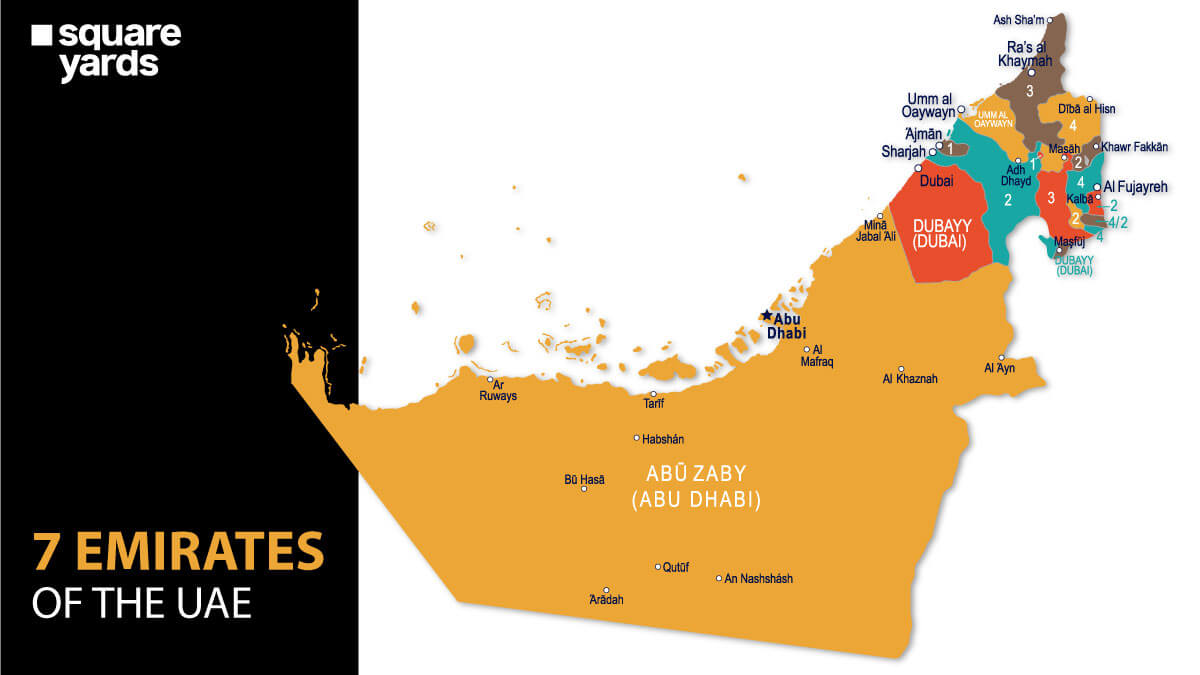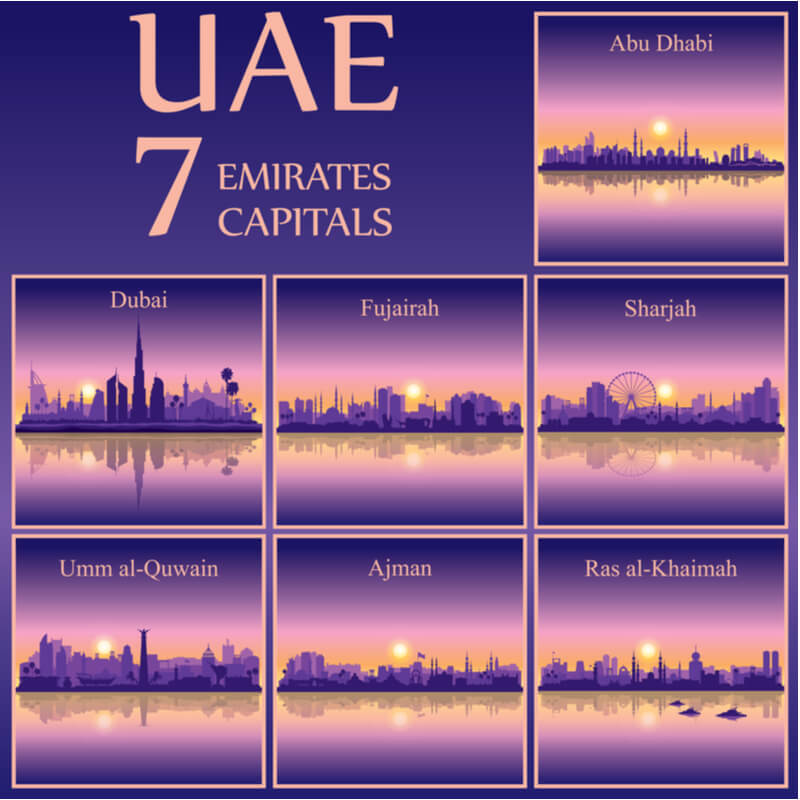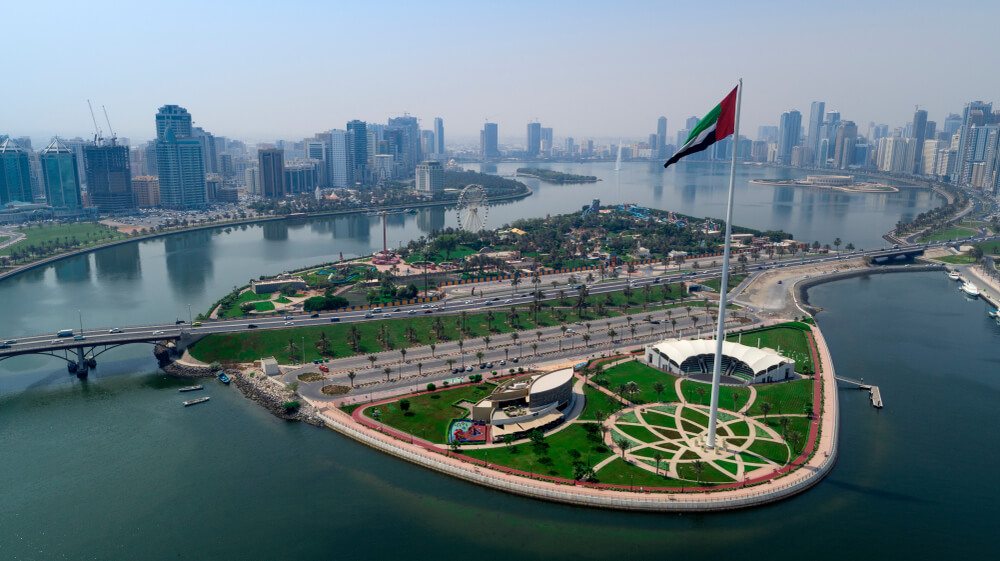The founding father, Sheikh Zayed bin Sultan Al Nahyan’s unrivalled vision transformed the fate of the UAE from mere sand to gold dust. These words stand true even today as the UAE soars high as one of the most prominent countries in the middle east. Undoubtedly, the seven emirates of the UAE have contributed to this triumph in unison. They used to say that agriculture has no future (in the UAE) but with Gold’s blessing and our determination, we have succeeded in transforming this desert into a green land.
We all have read plenty about Burj Khalifa or the Ferrari World but the true essence of the seven emirates is often neglected. Each emirate has its special features and economic value that defines the UAE’s eminence.
Seven Emirates of the UAE
Let’s have a look at the 7 Arab emirates in detail and learn about their significant offerings to the world.
-
Abu Dhabi – Largest of the 7 Emirates of UAE
Abu Dhabi heads the crown as the country’s federal capital and is also the largest of the seven emirates of the UAE. The translation of the name means the “land of the gazelle” which has a folklore attached to it. According to a popular legend, a gazelle guided the way of a lost tribe towards an island that had freshwater, a fort, some coral buildings and 300 palm frond huts or barasti. The tribe decided to settle there which marked the beginning of modern Abu Dhabi. One surprising fact about Abu Dhabi is that the traces of the first human settlements date back to the 3rd millennium B.C.
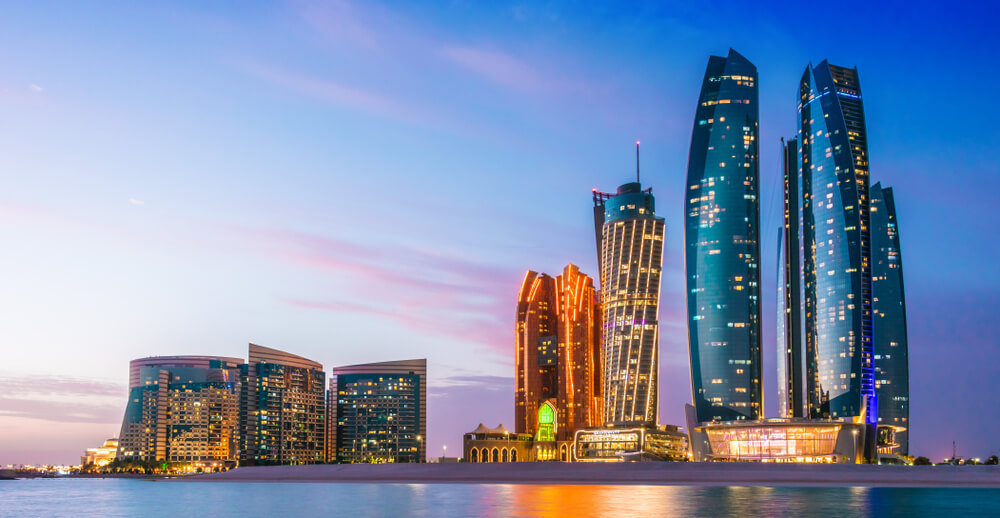
Since then, Abu Dhabi has seen abundant economic growth, especially in the past 50 years, while keeping its rich heritage intact. This emirate comprises three prominent cities and regions: Al Dhafra, Al Ain and Abu Dhabi. Being the largest emirate, it covers almost 85% of the UAE’s land area. It is also regarded as one of the safest cities in the world. The city is now home to the most luxurious lifestyle, scintillating high rises and mind-blowing landscapes. Some of the most popular tourist destinations are the Sheikh Zayed Grand Mosque, Qasr Al Hosn and the Ferrari World.
-
Dubai – Most Popular City in the World
Home to almost 200 communities, Dubai is one of the most popular cities in the world. Owing to its highly advanced and stunning infrastructure, Dubai attracts the maximum number of tourists and real estate investments. These factors are the driving force behind the city’s flourishing economy.

But before the charm of its sensational nightlife, a lit skyline, state-of-the-art landmarks, world-renowned skyscrapers, and luxurious shopping experience took over, Dubai was a simple land. Until the 1700s, pearl farming and fishing derived Dubai’s economy. Basic agricultural activities were a major part of its history. Fast-forwarding to today, Dubai is a global hub for trade and tourism. The burgeoning gold trade across the globe earned it the title of ‘City of Gold’. Burj Khalifa and Palm Jumeirah are some of the most visited destinations in the world.
-
Sharjah – The Epitome of the Art, Culture and Heritage
The third-largest emirate, Sharjah is the epitome of the art, culture and heritage of the UAE. So much so, it has also bagged the title of ‘Cultural Capital of the Arab World’ by UNESCO and ‘Capital of Islamic Culture’ for preserving the roots of the Arabs.
This emirate is home to numerous art galleries, museums, vast deserts, archaeological sites, beaches, mosques and beautiful heritage centres. One can relish the stunning views of the Gulf of Oman from several places in the Emirate. Khalid Lagoon, Sharjah Art Museum and Al Noor Mosque are some of the culturally enriched attractions in Sharjah.
-
Ajman – Smallest of the 7 Emirates of UAE
Ajman, the smallest of the 7 Arab emirates, covers 0.3% of the entire area of the United Arab Emirates, excluding islands. Situated on the coast of the Arabian Gulf, Ajman comprises two cities Masfout and Manama, surrounded by the enchanting Hajar mountain ranges. The sandy beaches, valleys, and mountains add a feather to its cap.
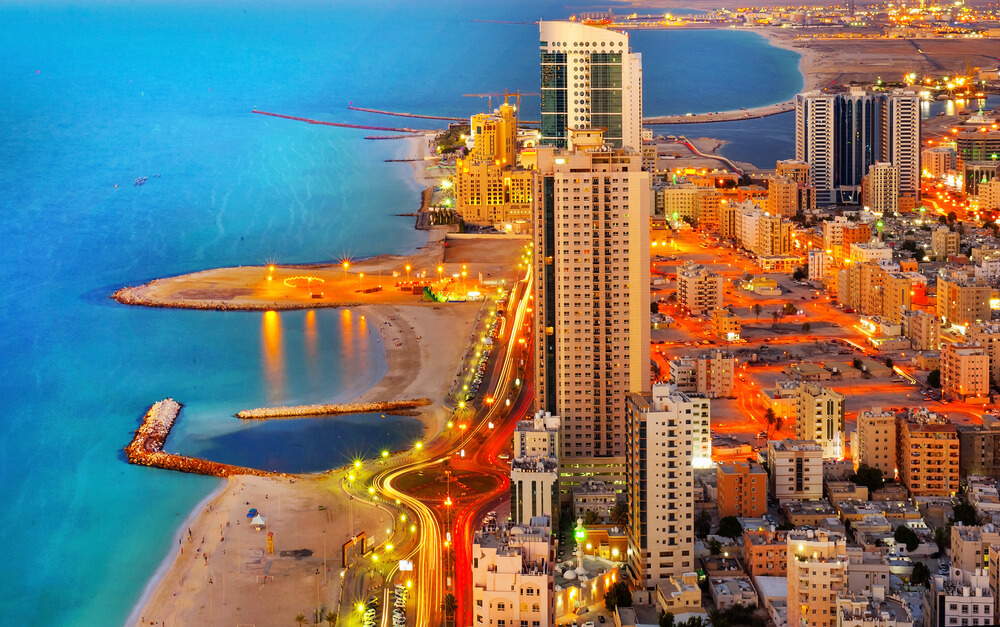
Ajman is a lap of natural wonders, archaeological sites that date back to the prehistoric period, and numerous archaeological forts which represent its rich history. This emirate is a blend of both modernity and traditional appeal. Ajman Free Zone and Ajman Port are the two pillars pushing the emirate’s economic growth. Ajman Museum and Masfout Castle are some of the most popular tourist destinations in the city.
-
Umm Al Quwain – Least Populated of 7 Arab Emirates
Umm Al Quwain is the least populated out of the 7 Arab emirates. Covering 1% of the UAE’s land area, this emirate is a treasure trove of unexplored sites. With its history dating back to the Stone Age, today the emirate has many recreational activities to offer including skydiving and sailing.
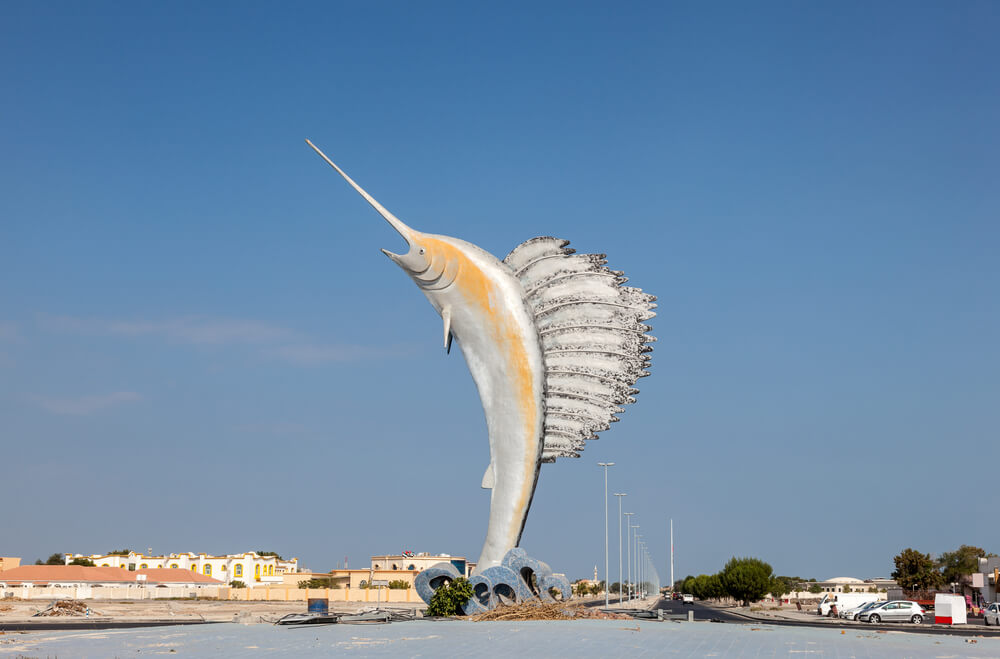
These recreational activities are also reflected in its name which is derived from Umm Al Quwatain, describing the richness of activities on both water and land. Prominent archaeological sites and mangroves are popular places that attract tourists. Al Seniah Island is one of the biggest islands in the emirate. Umm Al Quwain is also home to deep-sea fishing points that provide a world-class fishing experience for visitors. Falaj Almualla Fort and Ed-Dur site are must-visits when here.
-
Ras Al Khaimah – UNESCO Tentative List for World Heritage
Ras Al Khaimah’s rich history can be traced back to approximately 7000 years ago! It has been the centre of trade since the 13th and 14th centuries as per the evidence found in 2019. Home to almost 1000 archaeological sites, this emirate has four sites added to the ‘UNESCO Tentative List for World Heritage’.
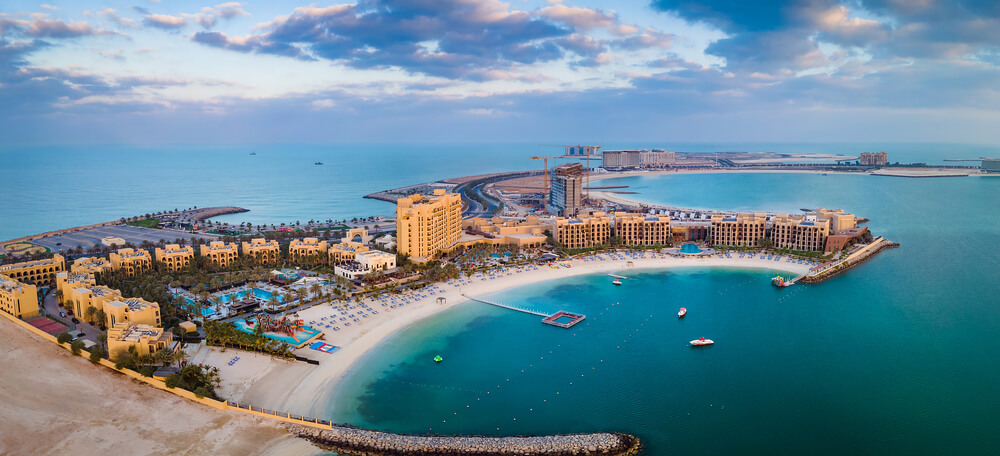
Ras Al Khaimah is renowned to preserve its roots in the form of Al Jazirah Al Hamra, a traditional fishing village, and Dhayah Fort, the only hilltop form still existing in the UAE. It is also home to the famous Jebel Jais mountain, the highest mountain peak in the UAE that has taken the world by storm. The scenic views do justify it being the northernmost emirate of UAE.
Various other adventure tourist attractions have played a key role in stabilising the economy of this emirate. This city, out of the seven emirates of the UAE, reflects the Arabian heritage and traditions. Do not forget to visit Wadi Shawka and the National Museum of Ras Al Khaimah while you’re at it.
-
Fujairah – Most Rugged and Authentic City
Fujairah has been crowned the most rugged and authentic city of the emirates seven. Boasting a 70 km coastline, Fujairah is a haven for those who seek water sports and adventures. From snorkelling to scuba diving, the sandy beaches will transport you into a world of nature. The fascinating sceneries are a cherry on the cake for the onlookers.
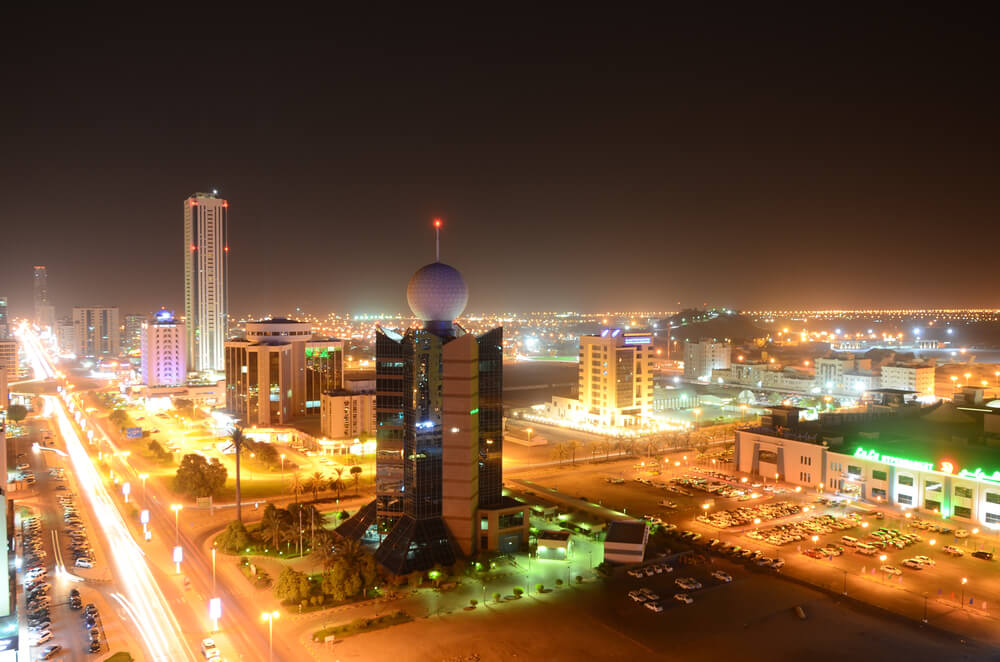
One of the most relaxing cities out of the 7 Arab emirates, Fujairah attracts visitors all year long because of the breezy summer temperatures. Apart from this, the economy is fueled by agriculture and fishing. Its strategic location makes it the UAE’s only point of contact with the Indian Ocean. People who like solace should definitely visit Tim’s reef, Madhab Sulpheric Spring Park and Wadi Wurayah while touring Fujairah.
In Conclusion
UAE has become the most integral part of the middle east and it is a no-brainer that the credit goes to the transcending 7 Arab emirates. Each one of these seven emirates of the UAE has contributed significantly to the growth of this country and given it wings in the 50 years of its inception.
More Useful Articles for You :
|
How To Change Mobile Number in Emirates Id |
|
|
Benefits of Emirates ID |
|
|
Sectors For Villa in Emirates Hills |
|
|
Guide To Tax System in UAE |
Frequently Asked Questions (FAQs)
Abu Dhabi, Dubai, Ajman, Sharjah, Fujairah, Umm Al-Quwain and Ras Al Khaimah are the seven emirates of the UAE.
The 7 emirates came together under a Federal Constitutional Monarchy to be united as a single nation. Sheikh Zayed bin Sultan Al Nahyan is majorly credited for the union of the emirates.
The seven emirates or sheikdoms were earlier known as the Trucial States. This name was established under the treaty relationship with the British in the 19th century.
The United Arab Emirates was formed on 2nd December 1971.
Ajman is the smallest of the seven emirates of the UAE by size that covers approximately 0.3% of the UAE’s landmass.
Sheikh Zayed bin Sultan Al Nahyan was the first ruler of the UAE until his death in November 2004.
The UAE is known for its largest cities Abu Dhabi and Dubai which are a hub of tourism. Dubai owns the largest building in the world, Burj Khalifa. What are the seven emirates of the UAE?
Who united the 7 Arab Emirates?
What were the seven emirates previously known as?
When was the United Arab Emirates formed?
Which is the smallest emirate in the UAE by area?
Who was the first ruler of the emirates seven?
What is UAE known for?

